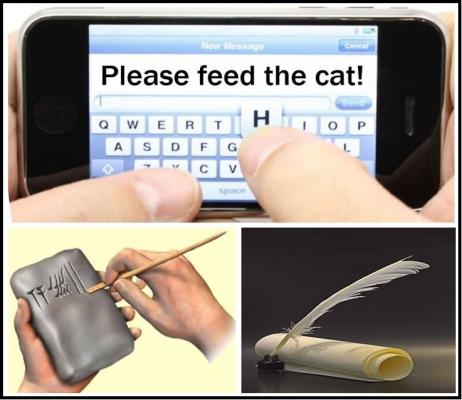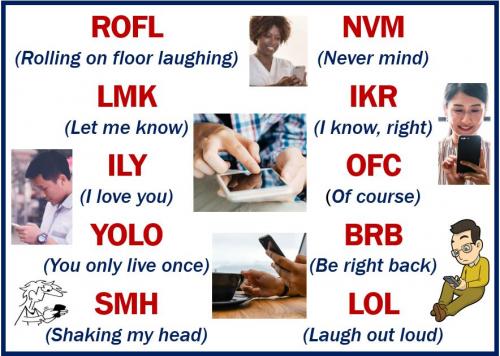
Throughout human history, our writing styles have been influenced by major events or technological milestones. The last major milestone was the advent of the Internet, which in a little less than three decades, has changed how most of us write significantly.
Did you know that people use more words today when they write compared to 50 or 100 years ago? People who say that the Internet has turned us into incoherent children are simply wrong. Thanks to new technology, thousands of new words have entered the English language.
None of these words existed when our parents or grandparents were young: digital footprint, URL, HTML, #Hashtag, blog, mashup, bromance, sexting, social media, and vlog (video blog).
Artificial intelligence, robotics, IT (information technology), and computer science have contributed significantly to the expansion of the English language. Particularly over the past two decades.
Emmy Favilla writes in the Guardian that the usual evolution of English has been accelerated online “leading to a less formal – but arguably more expressive – language.”
Writing well today is not a question of knowing lots of words or grammar, but understanding current technology and using it properly.
Today, we can use a grammar checker, word counters, a choice of fonts, and synonym tools. We can switch to italics, go blue, green, or black in an instant. We can also use a dissertation help service, picture enhancers, and even moving images that writers can insert into their articles or essays.

Are writing styles deteriorating or evolving?
Language is always evolving – it never stands still. That is why it is so difficult to understand Geoffrey Chaucer’s Canterbury Tales. He wrote the collection of 24 stories between 1387 and 1400. If language had not evolved, reading his works would be easy.
When new idioms, words, and writing styles emerge, young people tend to embrace them. Older adults, on the other hand, resist them. However, eventually, we all go with the flow.
About twenty years ago, some people started using the term “going forward,” meaning “from now on.” I once heard President Barack Obama say: “Going forward, we will have to be more careful.” As an older adult, I cringed. Today, I sometimes catch myself using the term.
Smartphones have made us adopt shorthand terms such as BRB (be right back), LOL (laughing out loud), and EOM (end of message). Laptops, mobile phones, and tablets have changed our writing styles.
It is definitely evolution
Is this change an example of the deterioration of language or its evolution? Evolution occurs when life adapts to changes in the environment. We adapt to texting with a smartphone by using shorthand terms. It is, therefore, definitely evolution.
David Crystal, a British linguist, academic, and author, believes we exaggerate how much language changes over time. In his book ‘Internet Linguistics,’ he wrote:
“The vast majority of English is exactly the same today as it was 20 years ago. Ninety percent or so of the language you use in a text is standard English, or at least your local dialect.”
When children communicate with their grandparents by email, for example, they do not need an interpreter or translator. They both use the same language.

Non-stop access to a giant library
Today, when we go online and write, we have access to a giant library – the Internet. We can disseminate information to people anywhere in the world, at any time.
Before the Internet, writers did not have so much information at their fingertips.
The speed of access to data and the sheer volume of information people devour today, have changed their writing styles.
Texts today tend to be much shorter than they were, for example, in the 1950s. Newspaper articles are rarely more than 600 to 1,000 words long.
Today’s online reader likes to glean and scan, rapidly picking up as much data as possible. Look at the articles that the BBC, the New York Times, or the Sydney Herald publish today. Compare them with their publications fifty years ago. They are much shorter now.
Video – Information Technology
Information Technology or IT refers to the development, maintenance, and use of computer networks, hardware, software, and systems.

